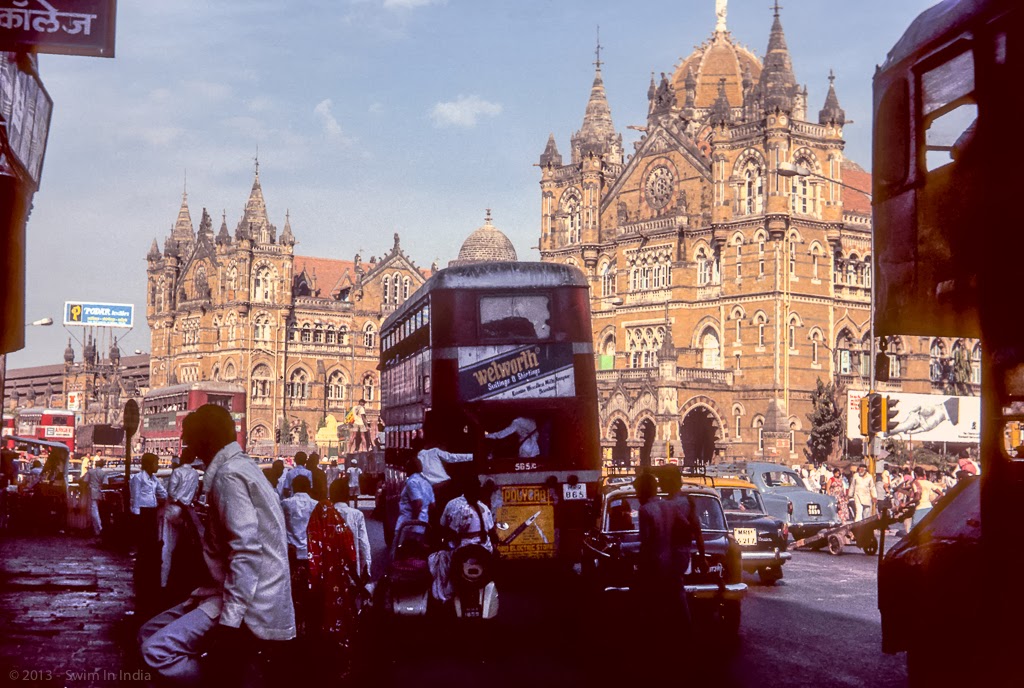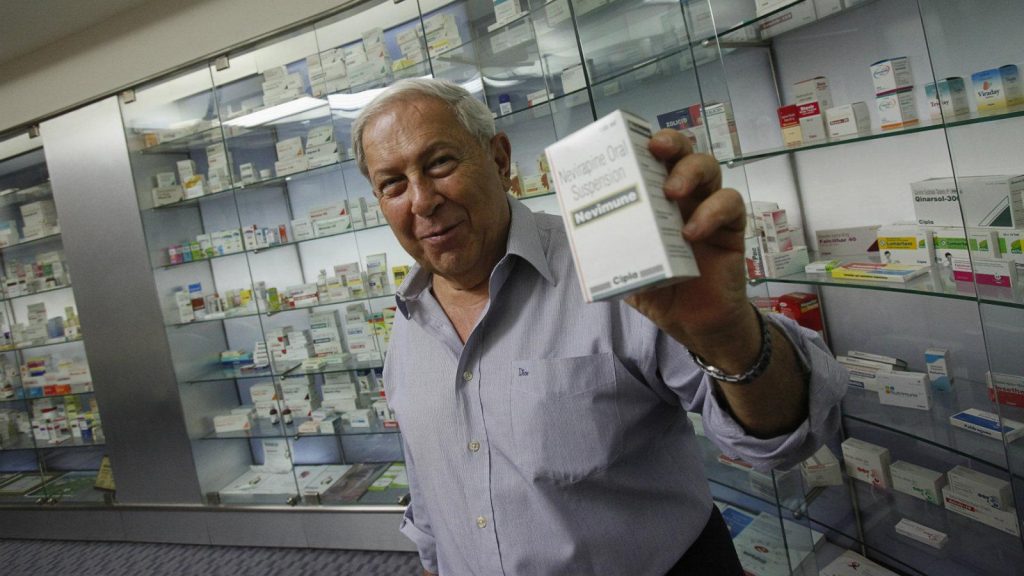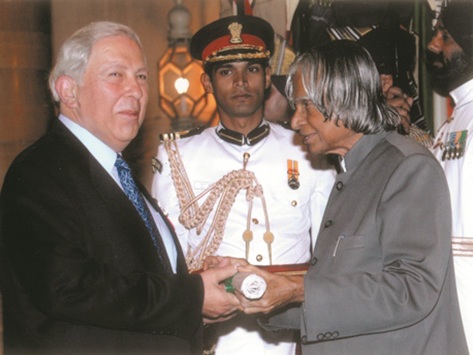Dr. Yusuf Hamied is a polish-born Indian scientist and the chairman of the famous drug company known as Cipla. Although many people might not remember Dr. Yusuf Hamied and many might have never even heard about him, but Dr. Hamied is the man who ended a dangerous pandemic in the year 2000. Back in the 80s, the world was facing a devastating epidemic caused by HIV (Human Immunodeficiency Virus). Medicine for this disease was a luxury for many as it was highly expensive. People from all over the world especially in the African region were getting sick and dying at a faster rate. It was Dr. Yusuf Hamied along with many activists came forth and provided a solution to this epidemic. This is a story on Dr. Yusuf Hamied and how he ended a deadly pandemic.
The Origin of HIV
In 1981 CDC reported a new strain of bloodborne virus that attacked the antibodies inside the human body. They rightly named it, HIV (Human Immunodeficiency Virus). Scientists confirmed that the virus came from a type of chimpanzee in West Africa. The people of that region hunted these chimpanzees for meat. That is how people came into contact with the blood of these animals. The virus then started to mutate and spread.
However, this was not the first time people encountered AIDS. AIDS first surfaced in the mid-1970s in the United States. Doctors didn’t fully understand the nature of the disease at that time. They stated that homosexual men and people with a weak immune system died within a month of contracting this disease. This new disease created massive tension among the scientists. They had no clue where it came from and if this going to cause a global pandemic.

The pandemic spreading in Bombay, the city where Dr. Yusuf Hamied lived at that time
The researchers in the western countries were hard at work at finding a cure for this disease. But India was completely unaware of the looming danger. After 7 years, in the mid-1980s India started seeing cases of HIV, and soon after, it spread like wildfire. As nobody knew about the disease, HIV took the Indian government by surprise. Cases of AIDS started to increase exponentially in the red light district of Bombay. That is how, the city of Bombay earned the infamous name of, AIDS capital of India.
Even Though Bombay plunged into darkness hope was not lost. Dr. Yusuf Hamied lived in Bombay at that time and the rising cases of AIDS in his city took his attention. Dr. Hamied recently took over a pharmaceutical company called ‘Cipla’. One of his colleagues informed him that AZT was the only available drug to treat AIDS at that time. Azidothymidine (AZT) is an antiretroviral medication that prevents the mother-to-child spread of AIDS during birth, or any other kind of exposure.
The Indian government tasked the research head of an Indian government laboratory to start producing a chemical synthesis of AZT. As it was the only way to stop the spread of AIDS. However, Dr. Hamied wanted Cipla to produce synthetic drugs derived from the ones produced by the United States. The company was ready and equipped to start the manufacturing of this drug, but the roadblock was patent.
Burroughs Wellcome faces major criticizing for selling life saving drug at an outrageous cost
At that time, a drug company in the US called “Burroughs Wellcome” manufactured AZT, in the late 1980s. The company sold the drug at $8,000 per patient a year. As expected, the company faced heavy criticism for setting such an outrageous price on a life-saving drug. This price was abhorrent even for an American citizen at that time. The company, however, defended itself by saying that the price was just right. They claimed that the money was needed to cover all the expenses that were needed for the R&D of the drug. The pandemic was taking a toll especially on the people of Africa as Millions could not afford the drug. In the 90s the situation of African people seemed direr. As the cases of HIV increased at a faster rate due to the unavailability of the “life saving” drug.

Dr. Yusuf Hamied’s battle against the big pharmas
In 1993, Dr. Yusuf Hamied reached out to the government and declared that he can produce the synthetic drug at 1/10th of the international price, which makes it $2 per day. But even that price was unaffordable for the people of India at that time. Dr. Hamied then asked the government to purchase the drug from Cipla in bulk and distribute them among the general public of India, but the government refused, stating that it only had the money for detention and prevention. The government asked Dr. Hamied to further reduce the cost of the drug if possible. Cipla continued its effort in producing the synthetic drug but Dr. Yusuf Hamied’s research still continued and a few years had passed.
In the late 1990s, Dr. Hamied read in a medical journal that a combination of 3 cocktails proved effective in controlling AIDS and it was called HAART, which is the acronym for “Highly Active Antiretroviral Therapy” but the same issue of patent resurfaced as the 3 drugs were produced by 3 different drug companies at that time. After this, the price of this drug went even higher. The pharmaceutical companies charged $10,000 to $15,000 per patient per year. Dr. Yusuf became vocal at that time and declared that Cipla can produce the drug at $200 to $300 per person per year.
A lawsuit against Cipla that put both sides at a stalemate
Witnessing the dire condition of the country Dr. Yusuf immediately started manufacturing the synthetic version of the drug and his goal was to bring down the cost of the drug to less than $1 per day. As there was no other way, many countries started to back down from the patents and started importing the low-cost drug from India. India itself changed its patent in order to bring the new low-cost life-saving drug to the general public. The big pharmaceutical companies became furious as their profit margin declined. Fearing that other countries might step away from their patent, they started staging their efforts in blocking the sale of the low-cost drug.
The International drug companies along with the help of the United States sued India claiming that it had violated a trade agreement called TRIPS which stood for, Trade-Related Aspects of Intellectual Property rights. This put a stop to the sale of the life-saving drug and thus 24 million people were getting sicker and sicker day by day. The government asked Cipla not to halt its production of the drug. But the problem was the same, they couldn’t sell the drugs, and there was no point in producing them.
Dr. Hamied’s proposal to the European Commission
As countries all over the world struggled to battle AIDS, big pharmaceutical companies were busy making a profit. But in 2000 a former investigative journalist and activist contacted Dr. Hamied. He had fought vigorously against the notorious patents issued to the drug companies. The journalist introduced Dr. Hamied to the other members of the activists. Now with their support, Dr. Hamied continued to fight against the big pharma’s. Their main objective was to produce the life-saving drug and deliver it to those who need it the most, free from the grasp of the patent.
The International European Commission on HIV and AIDS invited Dr. Yusuf Hamied to a conference. The representatives of the big pharmaceutical companies were present at that conference as well, and as you might have guessed, was very unfriendly towards Indian drug companies. Dr. Hamied however, took to the podium and said that he could manufacture the drug at $800 per year or $600 per year to the country which would purchase it in bulk and even offered to sell the technology for free to the African country which could produce their own drug. He also introduced the drug called Nevirapine, which was effective in limiting the transmission of the disease from mother to child during birth. The European companies and health ministers present in that conference ridiculed and declined Dr. Hamied’s offer as they considered the Indian research as poor, backdated, and their products as cheap imitations.
Slanders against Indian generics by the CEO of GSK, Jean Garnier
Dr. Yusuf still waited for the European countries to take his offer, but was losing hope. The Indian government however revoked the GSK patent which made the pharmaceuticals head furious. This enabled the domestic drug companies to produce low-cost drugs and continue the treatment for AIDS. In a 2001 healthcare forum, Jean-Pierre Garnier, the CEO of GlaxoSmithKline, verbally assaulted the Indian drug companies calling them “Pirates” and said “They have never done a day of research in their lives”
Soon after, the cases of HIV declined and the pandemic was contained, at least within India. The World Trade Organization still didn’t allow India to export the medicine, the poor countries in West Africa suffered the consequences as the disease wreaked havoc in the continent.
Rise of the “Robin Hood of Drugs”
After some time, a western journalist learned that a drug company in India called “Cipla” was producing this life-saving drug at less than $1 a day, he was surprised and wanted an interview with Dr. Yusuf Hamied. Dr. Hamied gladly accepted the offer in hopes that the United States would drop its support for the big pharma companies and would allow him to distribute the much-needed medicines to the poorer countries.
Donald G McNeil Jr. published an article on February 7, 2001, in the New York Times entitled “Indian Company Offers to Supply AIDS Drugs at a Low Cost in Africa”. That interview changed everything for Dr. Yusuf Hamied. He was given the title of “India’s Robin Hood of Drugs”. Western countries were shocked to find out the capabilities of India for producing such a drug and at a low cost. When the word got out, many governments wanted to import the drug from India and were also questioning their own pharmaceutical companies for their inability to produce the drug at a lower cost.
When people learned that the United States backed the big pharma companies, the Bush administration received massive heat from the general public. It sparked international outrage as CEOs of big drug companies were shamed and criticized. Street protests embarked from Washington DC to New Delhi and accusations of genocide began to spread from all over the world which shook the Bush administration. Finally, after many protests, the big drug companies announced that they would drop their charges against Indian companies in WTO so that they can deliver the AIDS medicine to the countries in West Africa. Soon after, Indian drug companies started exporting their medicine to poor countries where they were sold at a low cost thus ending a deadly pandemic.

India’s major contribution in healthcare
After this event, India realized the importance of healthcare and research. It started to invest more of its resources in the research and development of drugs and medical treatments. The medical tourism industry in India is now over $10 billion. Even today the medical tourism visa granted by India saves at least over a million lives. Many people who cannot afford the medication in their own country seek Indian medical treatments.
Dr. R Bidwe, the Director of Tata Memorial Research Centre, revealed in an interview to the Times of India, the cost of treating cancer abroad is 10 times more than that of in India, which effectively makes it 500 times more. Even a simple consultation in the United States costs $10,000. Again, a simple hip replacement in the US costs around $50,000. But in India, it costs only $6,000 within medical facilities that maintain the international standards. So, a patient from the US, can fly from their country, take the treatment and return home and it would still cost him/her at least 20% less (depending on the duration of their visit).
The reception of “The Padma Bhushan”
Because of Dr. Yusuf Hamied’s brilliant and honorable work, he ended a deadly pandemic that could have claimed millions of lives. He was awarded Padma Bhushan, which is India’s third-highest civilian honor from the Indian Government. He is still praised by the media and the people for his actions.

Subscribe to our Newsletter and be the first to receive the hottest stories
Our writers are always at work in doing research and producing the best articles for you. Stay connected with us by subscribing to our newsletter and get all the tips and insiders!